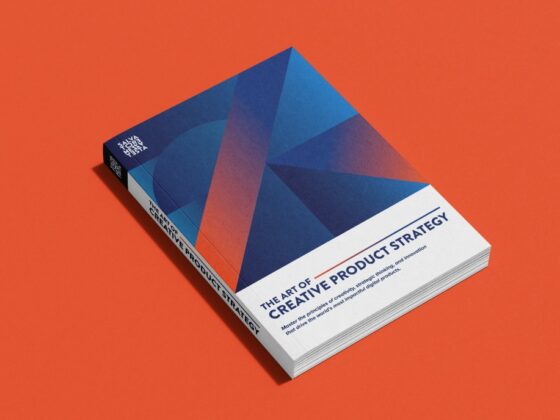In the ever-evolving landscape of digital product design, one constant remains: change. And at the forefront of this change stands Artificial Intelligence (AI) and as a design leader, I’ve had the privilege of witnessing firsthand the transformative power of AI in shaping the future of design.
In this article, I aim to share my insights on how designers can equip themselves to design for AI effectively, providing valuable tips, insights, and highlighting common pitfalls to avoid.
The AI Revolution in Digital Product Design

As AI continues to weave itself into the fabric of our digital world, its impact on design is undeniable. From UI design to user research, AI is a disruptive force that offers both challenges and opportunities.
Designers venturing into the realm of AI must first embark on a journey of understanding. Familiarity with the AI ecosystem, including terminologies like “Generative Design” and “Generative AI,” is essential.
Embracing Data-Driven Decision Making

In the AI era, data is the lifeblood of design. Designers must embrace data-driven decision-making processes, leveraging AI to gain insights into user behaviors, preferences, and pain points. Through AI-driven analytics, we can uncover hidden patterns and trends that inform design choices.
For instance, let’s consider a UI designer who uses AI-powered heatmaps to analyse user interactions with a mobile app. By identifying which areas of the app are most and least engaging, the designer can prioritise improvements that enhance the user experience.
From User Experience Design to AI-Driven Experience Design

The shift from User Experience (UX) design to AI-Driven Experience design is marked by the need to consider how AI interacts with users.
Designers must craft interfaces that not only accommodate AI but also facilitate intuitive human-AI interactions. The challenge lies in maintaining a seamless and harmonious user experience while harnessing the capabilities of AI.
We can Imagine a chatbot interface that uses natural language processing to understand and respond to user queries. A UX designer’s role is to ensure that the chatbot’s responses are not only accurate but also conversational, creating a delightful user experience.
The Role of User Research in AI Design

User research takes on new dimensions in AI design. It’s no longer about understanding what users want but also how they want AI to assist them.
Designers must conduct research to uncover user expectations regarding AI interactions and tailor their designs accordingly.
Let’s consider a UX researcher conducting interviews to understand how users perceive AI-powered recommendations in an e-commerce platform. By gathering insights on user trust, preferences, and concerns, the design team can refine AI algorithms to align with user needs.
Avoiding Common Pitfalls

Designing for AI isn’t without its pitfalls. One common mistake is over-reliance on AI algorithms without considering the nuances of human behavior. AI should augment human capabilities, not replace them. Striking the right balance is crucial.
An example of this balance is evident in email marketing. While AI can personalise email content based on user behavior, it’s important not to rely solely on AI. Human creativity is still needed to craft compelling and emotionally resonant messages.
Another pitfall is neglecting ethical considerations. AI can unintentionally perpetuate biases present in training data. Designers must remain vigilant, continuously assessing AI outputs for bias and taking steps to mitigate it.
Equipping Designers for the AI Era

- AI Literacy: Invest in AI literacy. Familiarise yourself with AI concepts, technologies, and terminology to engage effectively in AI design projects.
- Data Proficiency: Develop data proficiency. Understanding how to collect, analyse, and leverage data is pivotal in AI-driven design.
- Ethical AI: Prioritise ethical considerations. Stay informed about AI ethics and ensure your designs uphold fairness and transparency.
- User-Centric AI: Always keep the user in mind. Design AI-driven experiences that enhance and simplify users’ lives.
- Continuous Learning: AI evolves rapidly. Stay curious and commit to continuous learning to remain at the forefront of AI design.
Conclusion
Designing for AI isn’t a choice; it’s a necessity in today’s digital landscape. As AI continues to redefine design parameters, designers must equip themselves with the knowledge and skills to harness its potential.
The path to successful AI design begins with understanding, data-driven decision-making, and a commitment to ethical practices. By embracing AI as a collaborative partner, designers will not only navigate the challenges of AI-driven design but also pioneer the future of digital product design.
Remember, AI isn’t a magic wand; it’s a tool that, when wielded skillfully, can produce remarkable results.



